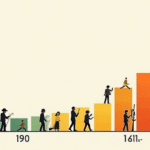Introduction
In Mexico, the water crisis narrative often revolves around scarcity and the looming threat of a “Día Cero” (Day Zero). However, this perspective overlooks available and proven solutions that could revolutionize water management in the country. The key lies not in seeking new sources, but in optimizing the use of the water already available—from “Día uno” (Day One), today.
Rainwater Harvesting and Efficient Wastewater Treatment
Two crucial strategies are rainwater harvesting and efficient wastewater treatment. Rainwater collection for non-potable uses can significantly alleviate pressure on traditional water sources and help mitigate urban flooding risks. Moreover, its implementation can be scaled from individual homes to large industrial complexes.
Regarding wastewater treatment in industry, Mexico lags considerably. Only 10-12% of the water used by companies is recycled, according to estimates from the National Water Commission (CONAGUA) and private sector sources. This figure is minuscule compared to countries like Chile or Brazil, where industrial reuse can exceed 30%, depending on the sector.
For instance, in Chile’s copper mining industry, over 70% of the water is recirculated. In contrast, more than 50% of industrial wastewater in Mexico is not treated or reused. The 2023 Water Statistics in Mexico report, published by CONAGUA, states that as of 2022, there were 3,809 industrial wastewater treatment plants, collectively treating only 48% of the estimated total load.
Many of these plants were built due to regulatory requirements for permits or licenses but lacked operational continuity. In other words, they were constructed to comply rather than function, as warned by researchers from UNAM.
The Rising Cost of Water in Industry
Water in industry is not just an input; it’s also a cost. Processes such as cooling, cleaning production lines, or steam generation rely on it. Industries like food processing, textiles, and chemicals require substantial volumes of water and face significant challenges.
Improving this statistic is not just viable but necessary. Advanced technologies for filtering and disinfecting enable treated water to meet the required standards for reusing it in industrial processes, irrigation, or even non-potable domestic uses. These solutions are not only technically feasible but also offer economic benefits by reducing costs associated with acquiring new water.
For systemic transformation, regulatory frameworks must support this change. The NOM-001-SEMARNAT-2021, in effect since 2022, raised wastewater discharge standards, compelling companies and municipalities to update their processes. Although its implementation has been gradual, its effects are already visible.
The Role of Awareness
Changing our understanding of water involves viewing it not just as an input but as a strategic asset. A company that chooses to treat and reuse its water is simultaneously securing its future amidst climate uncertainty and market pressures. The rational approach today is not to fear a future “Día Cero” but to act now, making it “Día Uno” (Day One).
*Director of Rotoplas Water Services
Key Questions and Answers
- What are the main water management strategies in Mexico? The focus should be on optimizing existing water resources through rainwater harvesting and efficient wastewater treatment.
- Why is industrial water recycling important? It significantly reduces pressure on traditional water sources, mitigates urban flooding risks, and offers economic benefits by decreasing water acquisition costs.
- What challenges does Mexico face in industrial water treatment? Mexico lags behind other countries like Chile and Brazil in industrial water recycling, with only 10-12% of industrial water being recycled.
- How can regulatory frameworks support better water management? Frameworks like NOM-001-SEMARNAT-2021 can raise wastewater discharge standards, compelling companies to update their processes.
- What is the significance of viewing water as a strategic asset? Companies that treat and reuse their water secure their future amidst climate uncertainty and market pressures.






